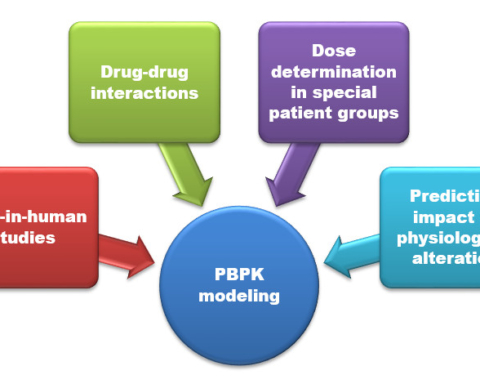Year 2002, the U.S. Food and Drug Administration (FDA) published a concept paper on current good manufacturing practice for 21st century. This document expressed suggestions that companies should build safety, quality and efficacy into their new pharmaceutical products as early as possible. This concept is known as Quality by Design. In addition to this new concept being considered by FDA in its cGMP initiative, two important guidance documents were published as part of International Conference on Harmonization (ICH) guidelines: Q8 Pharmaceutical Development and Q9 Quality Risk Management.
The concept of quality by design is outlined in ICH Q8 (pharmaceutical development) that mention the definition of QbD that “QbD is a systematic approach to development that begins with predefined objectives and emphasizes product and process understanding and process control, based on sound science and quality risk management”. The revision of ICH Q8, or ICH Q8 (R1), is an annex to ICH Q8. It provides further clarification of key concepts outlined in the core guideline and describes the principles of QbD.
The pharmaceutical industry is currently adopting Quality by Design (QbD) concepts to facilitate continuous improvement strategies to enhance product quality and manufacturing productivity. QbD ensures product and process performance characteristics are scientifically designed to meet specific objectives, not merely empirically derived from the performance of test batches.
Why QbD
- Higher level of assurance of product quality
- Cost saving and efficiency for industry & regulators
- Facilitate innovation
- Increase manufacturing efficiency
- Reduce cost
- Reduce product rejects
- Minimize/ eliminate potential compliance actions
- Enhance opportunities for first cycle approval
- Streamline post approval changes & regulatory processes
- More focused inspections
- Opportunities for continual improvement.
The characteristics of a successful QbD program
- Involves product design and process development
- Risk-based, science based
- Primary focus is patient safety and product efficacy
- Drivers to business benefits
- Make improvement in process understanding
- Make improvement in process capability/robustness
- Systematic development
- Holistic – applies to all aspects of development
- Multivariate – interactions are modeled
- Requires a significant reduction in regulatory oversight post approval.
QbD Development Process
Pharmaceutical QbD is a systematic, scientific, risk-based, holistic and proactive approach to pharmaceutical development that begins with predefined objectives and emphases product and processes understanding and process control. A QbD development process may include-
- Begin with a target product profile that describes the use, safety and efficacy of the product
- Define a target product quality profile that will be used by formulators and process engineers as a quantitative surrogate for aspects of clinical safety and efficacy during product development
- Gather relevant prior knowledge about the drug substance, potential excipients and process operations into a knowledge space. Use risk assessment to prioritize knowledge gaps for further investigation
- Design a formulation and identify the critical material (quality) attributes of the final product that must be controlled to meet the target product quality profile
- Design a manufacturing process to produce a final product having these critical materials attributes.
Design of experiments (DOE), risk assessment, and process analytical technology (PAT) are tools that may be used in the QbD process when appropriate. They are not check-box requirements.
Evolution of QbD over the past years
QbD has continued to gain momentum over the past year. Here the most observable factors has been seen that, an increase in the conspectus and practice of QbD on a standardized basis. There are lots of companies that are still experimenting with the concept and developing mechanisms to support it, although they have put opinion that something they will do that will be benefited from the FDA.
As companies invest and gain experience with QbD, there are also increasing demands for the FDA and other regulatory bodies. Two major demands that have been added for the need of clarified the method to describe the actual example, for the better benefit that FDA promised when QbD was originally advocated.
Challenges to implementing QbD FDA perspective:-
- Implementation Challenges
– Putting new concepts/ approaches into practice
– Diversification of products
– Different regulatory processes (NDA, ANDA, BLA)
– Expectations for QbD based submission while addressing traditional requirements (dual processes)
– Integration of review and inspection - Broad spectrum of approaches to develop manufacturing, and quality operations across industry
- Implementing while harmonizing
- Heavy workload and limited resources.
Challenges by industry segments/ perspective
New Drug: The challenge companies cited as the most important was the consistency across the FDA. This consistency pertains to both quality of reviews as well as the understanding of QbD within and across departments. Another challenge that was cited very frequently, was the lack of international harmonization. Outside of USA those countries are increasing the effort and time to file QbD, they are negatively affected the business case.
In general, new drug companies were at a more mature stage of adoption. Internally, alignment across the company is a problem for many new drug companies. In many companies R&D is incentivized by shots on goal for focusing on developing a solid understanding of the product.
Generics: The most prominent challenge identified by Generics manufacturers was a lack of belief in the business case. However, there are two camps. One half believes that there is a business case for QbD in generics and is implementing. The other half believes that today, generics is all about file first, figure it out later. These companies fear the potential additional time in early development will disadvantage them in making it first to file.
A Generics manufacturers also identified unclear regulatory benefits as a key challenge that closely related to the lack of belief in a business case. A final key challenge from Generics manufacturers was lack of guidance for how to actually implement.
Biologics: The most prominent challenge identified by Biologics manufacturers was around the lack of technology to execute. This is almost impossible to prove the molecular parameters necessary in a QbD file since we don’t really understand the effects at the molecular level.
Potential benefits from QbD
Analysis identified many potential benefits from QbD some of which are quantifiable, and some of which are not. In case of quantifiable benefits, value comes from four main areas for the reduction of Cost of Goods Sold (COGS) and capital expense, that increased technical development productivity, improved quality (and lower risk), and increased sales.
- Reduction of COGS and capital expense: QbD allows improved planning, cycle time, yield and quality which potentially down costs across the industry.
- Technical development productivity: Analyzing QbD techniques during the product development process (e.g., plat forming, taking advantage of growing knowledge base) can lead to huge savings.
- Improved quality and lower risk: QbD is really using good science which helps to guidance an overall better; more reliable product savings from reduced risk of regulatory citation.
- Increased sales: Products that utilize QbD have better launches and generally, will have better product design leading to fewer stock-outs.
The Role of Quality Risk Management in QbD
ICH Q9 discusses the role of risk management in pharmaceutical development as follows:
- Selection of the optimal product design (e.g., parenteral concentrates vesper-mix) and process design.
- To enhance knowledge of the product performance over a wide range of material attributes.
- To assess the critical attributes of raw materials, solvents, Active Pharmaceutical Ingredient (API)-starting materials, API’s, excipients, or packaging materials.
For the management in QbD is to make ensure that teams utilize risk assessment tools that are appropriate of providing risk- and science-based reviews at critical milestones in the R&D lifecycle. One such critical milestone is important to finalization of process technology, synthetic route, or a qualitative formulation.
Appropriate subject matter experts to obtain prior knowledge and apply feedback learnings to these major decisions. This process understanding can be achieved when the relationship between critical quality attributes (CQAs, y) and all the sources of variation (x) in the manufacturing process are understood. The relationship goes like, y = f(x).
The principle sources of quality variations (examples) or inputs to a process include:-
- Material attributes (peroxides, water content, impurities)
- Process parameters (temperature, force, speed);
- Equipment design (baffles, agitator type, surface type);
- Measurement system (sample prep, extraction time);
- Environment (relative humidity, temperature, oxygen content);
- Person (operator, analyst).
It is important to note that the total process variation as measured by the variance or standard deviation (σ) of the average batch data is a function of all sources:-
Σ Total = f (σ Material +σ Process +σ Equipment +σ Measurement +σ Environment +σ Person)
Success factors in risk management
Risk management should –
- create value
- be an integral part of organizational processes
- be part of decision making
- explicitly address uncertainty
- be systematic and structured
- be based on the best available information
- be tailored
- take into account human factors
- be transparent and inclusive
- be dynamic, iterative, and responsive to change
- be capable of continual improvement and enhancement.
The use of QbD principles during product development provides opportunities to facilitate innovation and continual improvement throughout the product life cycle, compared to traditional approaches hence it is systematic way to product and process development. QbD principles increase process knowledge and product understanding, often through the application of new technologies such as PAT or modeling.
The increased process knowledge and product understanding resulting from QbD can increase the efficiency of manufacturing processes; reduce product recalls and compliance actions, resulting in cost savings for pharmaceutical companies. By reducing uncertainty and risk, QbD can allow industry and regulators to focus their resources in the most critical areas. Because much more process understanding has been demonstrated and expressed in the dossier, QbD filings also can help facilitate CMC reviews and GMP inspections by the regulators and decrease the number of post-approval regulatory submissions required to make process changes. QbD can also facilitate the use of innovative technologies and promote the use of new approaches to perform process validation, such as continuous quality verification.








